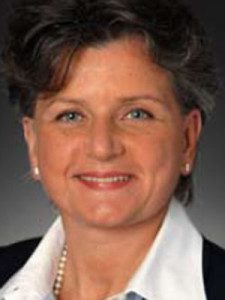Rebecca Ray, Ph.D., serves as the Executive Vice President, Knowledge Organisation and Human Capital Practice Lead for The Conference Board, where she has oversight of the research planning and dissemination process for all three practices areas (Corporate Leadership, Economics & Business Development and Human Capital). She is responsible for the research agenda which, in turn, drives the business planning process for the organisation and is the leader of the global human capital practice.

For the first time, new research from Development Dimensions International (DDI) and The Conference Board directly connects a critical difference between the top and bottom corporate financial performers – companies with a higher percentage of women in leadership roles perform better. The research also connects the percentage of Millennials in leadership roles with impacting overall business success.
The report showed no differences in self-evaluated leadership competencies by gender. This matches DDI’s actual assessment centre data of over 10,000 leaders that shows when it comes to skills and behaviours, men and women are equally competent. The report did call out a difference between men and women in the area of confidence.
Millennials: Will become the dominant demographic in most organisations
Millennials will become the dominant demographic in most organisations in the coming years and, with that, comes a massive cultural shift in how work gets done, how work and life blend, how technology enables and enslaves, how virtual, globally distributed teams are managed and supported to be truly high-performance. They also bring with them a global mindset and sensitivity to issues and causes.
Organisations that understand, adapt and leverage this new wave of workers will be uniquely positioned to attract and retain talent, generate better business performance, leverage social media for organisational advantage, crowd-source wisdom and serve the unique yet mass needs of their customers.
Women: Poised to overcome some of the remaining barriers to success
Traditionally under-represented among the working populations in most industries, most boardrooms and most countries, women are poised to overcome some of the remaining barriers to success, whether those barriers are imposed by cultural norms, self-imposed expectations of limited success, or entrenched patterns.
Women represent a greater percentage of college graduates as well as successful entrepreneurs. Our research shows that those companies with greater numbers of women in the senior ranks out-perform other organisations; these women will need to have a supportive organisation in which to thrive but, when they don’t, they will choose to strike out on their own as an entrepreneur.
Better to keep talented women in the organisation than to find them in the open market as a new competitor.
Read the full report here: The Global Leadership Forecast (GLF) 2014 | 2015, Ready-Now Leaders: Meeting Tomorrow’s Business Challenges
*Study methodolgy
This Global Leadership Forecast 2014|2015 is the seventh report since Development Dimensions International (DDI) began this research in 1999. The current report—a joint effort of DDI and The Conference Board—includes survey responses from 13,124 leaders; 1,528 global human resource executives; and 2,031 participating organisations. To ensure that no individual organisation dominated the overall results, a random sample was taken from any organisation whose leaders comprised more than 1 percent of the global sample.
To secure the sample size/scale, the multi-organisational project team canvassed a wide range of organisations and utilised a variety of contact methods – in addition to DDI and The Conference Board, the organisations securing organisational and leader participation included the Association for Talent Development (ATD, formerly ASTD), Berlitz, Gutemberg Consultores, HR.com, HRoot, Institute of Executive Development (IED), The Mexican Association for Human Resources Direction (AMEDIRH), People Matters, and The Next Step.
https://www.linkedin.com/company/development-dimensions-international





